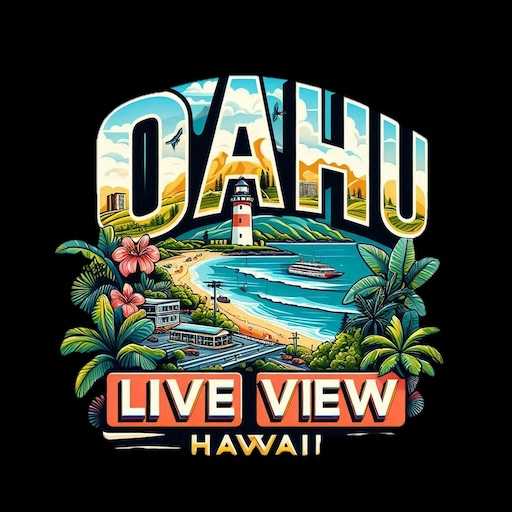Kahe, Oahu Webcams
Kahe FAA Webcam
Kahe: A Gateway to Oahu’s Power and Legacy
Kahe, Oahu Webcams. The late 18th and early 19th centuries brought profound changes to Hawaii, including the region of Kahe, with the arrival of Western explorers, traders, and missionaries. Captain James Cook’s voyages in the Pacific opened the islands to increased interactions with the outside world. These encounters introduced new technologies, goods, and cultural practices, which began to reshape traditional Hawaiian society.
Missionaries played a prominent role in the transformation of Hawaiian life, introducing Christianity, Western-style education, and new agricultural methods. Kahe, like many parts of Oahu, experienced the spread of Western influence during this time. The establishment of sugarcane plantations across the island marked a shift from traditional subsistence practices to a cash-based economy. While Kahe was not a major plantation hub, its location along the coast made it a strategic site for transporting goods and resources.
The introduction of Western diseases, however, had a devastating impact on the Native Hawaiian population, leading to a dramatic decline in numbers. Despite these challenges, the people of Kahe adapted to the changing world while striving to preserve elements of their cultural identity.
Kahe’s Role in Modern Development
In the 20th century, Kahe became increasingly significant as Oahu underwent urbanization and economic expansion. The development of infrastructure, including roads, power plants, and ports, brought changes to the region, positioning Kahe as a key site for modern progress.
One of the most notable developments in Kahe was the construction of the Kahe Power Plant in 1963. Operated by Hawaiian Electric, this facility became one of the island’s primary sources of electricity, providing energy to homes, businesses, and industries. The plant’s location near the coast allowed for the use of seawater in its cooling systems, reflecting innovative approaches to resource management at the time.
The presence of the power plant gave rise to the nickname “Electric Beach,” which remains popular today. The warm water discharge from the plant has created a unique underwater ecosystem, attracting marine life and making the area a favorite spot for snorkeling and diving. Visitors to Electric Beach often encounter vibrant coral reefs, tropical fish, and even sea turtles and dolphins, highlighting the coexistence of industrial development and natural beauty.
Environmental and Cultural Preservation
Kahe, located along the southwestern coast of Oahu, is a small but significant area known for its historical ties to ancient Hawaiian traditions, its strategic importance during modern development, and its role as a key site for energy production. Sometimes referred to as “Electric Beach” due to its proximity to the Kahe Power Plant, this coastal region carries a multifaceted history that intertwines cultural heritage, natural beauty, and progress.
Ancient Kahe: A Land of Sustenance and Spirituality
Kahe was part of an ahupua‘a, a traditional Hawaiian land division that stretched from the mountains to the ocean. The ahupua‘a system ensured that resources were shared and managed sustainably. In this area, fertile valleys and coastal waters provided the means for subsistence farming and fishing. Early Hawaiian residents cultivated taro in irrigated lo‘i (terraces) and grew other crops such as sweet potatoes and breadfruit to support their communities.
The name “Kahe,” which translates to “the flow” in Hawaiian, reflects the presence of freshwater springs and streams in the area that were essential for agriculture and daily living. These water sources also symbolized life and prosperity, connecting the people to the land in a deep and spiritual way. The coastal waters teemed with marine life, offering a vital source of food. Traditional fishing methods, such as the use of loko i‘a (fishponds), were employed to sustainably manage resources.
Kahe was also home to heiau (sacred temples), which served as places of worship, ceremonial gatherings, and offerings to the gods. These temples were an integral part of ancient Hawaiian spirituality and cultural life, reflecting the community’s connection to both the land and the divine.
Western Contact and Transformation
While Kahe has played a vital role in Oahu’s energy production and economic development, it has also faced challenges related to environmental conservation and cultural preservation. The impact of industrial activity on local ecosystems has raised concerns about sustainability and the need to protect marine habitats. Efforts by local organizations and community members have focused on promoting responsible practices, restoring native species, and raising awareness about the importance of preserving Kahe’s natural resources.
Cultural preservation has also been a priority for the residents of Kahe and the broader Wai‘anae coast. Initiatives to honor Hawaiian traditions, protect sacred sites, and pass down ancestral knowledge to future generations have helped ensure that Kahe’s historical and cultural legacy remains intact.
Kahe Today: A Unique Blend of Legacy and Progress
Today, Kahe is a unique blend of historical significance, modern development, and natural beauty. Its proximity to Electric Beach makes it a popular destination for locals and visitors seeking outdoor adventures and underwater exploration. At the same time, Kahe continues to serve as a vital source of energy for Oahu, reflecting the region’s role in supporting the island’s infrastructure and growth.
Kahe’s history is a testament to the resilience and adaptability of its people and landscape. From its roots as a thriving Hawaiian settlement to its transformation into a hub of modern energy production, Kahe embodies the balance between honoring the past and embracing the future. The area’s flowing waters, both literal and metaphorical, remind us of the continuity of life and the enduring spirit of Hawaii.
As the waves lap against the shores of Kahe, the stories of its land and people endure, offering a glimpse into the dynamic history of this remarkable corner of Oahu.
For more information, visit the official Oahu website.
